9.1 Classic Books
In this section I look at 8 philosophy books that are available on gutenberg.org. The books are:
- Democracy and Education, by John Dewey
- The Economic Consequences of the Peace, by J. M. Keynes20
- On Liberty, by John Stuart Mill
- Principia Ethica, by G. E. Moore
- Our Knowledge of the External World, by Bertrand Russell
- The Analysis of Mind, by Bertrand Russell
- The Problems of Philosophy, by Bertrand Russell
- The Methods of Ethics, by Henry Sidgwick
I then applied the model to these eight books, one chapter at a time. That is, I asked the model what probability it gave to each chapter from each of these books to being in each of the ninety topics. The outputs looked like this. (I’m just including the ten topics with the highest probability.)
| Subject | Probability |
|---|---|
| Ordinary language | 0.1929 |
| Denoting | 0.1804 |
| Knowledge | 0.0925 |
| Perception | 0.0557 |
| Idealism | 0.0535 |
| Physicalism | 0.0486 |
| Sense and reference | 0.0360 |
| Universals and particulars | 0.0337 |
| Propositions and implications | 0.0259 |
| Verification | 0.0228 |
There are three things to note about this table.
One is that the probabilities are very widely spread around. This is what normally happens when doing these out-of-sample applications. The model is much more confident about the data it was trained on than it is about other data. And even in the training data, the average maximal probability was around 0.4. Here it is more usually 0.2 or lower.
The second is that ordinary language plays an outside role in these models. The fact that it really isn’t like the other topics, that it is a style as much as a subject matter, keeps complicating the analysis.
And the third is that the topics here are old. Chapter 5 of The Problems of Philosophy reminds the model a little of “On Denoting”, which makes sense, and a little of Frege, which also makes sense, but the other subjects are very old. In fact, what’s surprising about this chapter is that it reminds the model of two relatively modern topics, not that it has eight or more old topics mixed in.
Let’s look at the top topic across each of the books. Since I am averaging the chapter probabilities, these numbers will be even lower than for individual chapters.
| Subject | Probability |
|---|---|
| Life and Value | 0.1188903 |
| Psychology | 0.0928031 |
| Other History | 0.0651241 |
| Marx | 0.0579922 |
| Idealism | 0.0392438 |
| Methodology of Science | 0.0361702 |
| Egalitarianism | 0.0275609 |
| Ordinary Language | 0.0245771 |
| Liberal Democracy | 0.0245334 |
| Feminism | 0.0229338 |
It’s a bit surprising that the model doesn’t identify this with pragmatism, and even more surprising that feminism turns up here. But otherwise this broadly makes sense.
| Subject | Probability |
|---|---|
| War | 0.1496192 |
| Other History | 0.1138113 |
| Marx | 0.0871626 |
| Egalitarianism | 0.0689745 |
| History and Culture | 0.0520126 |
| Psychology | 0.0445217 |
| Liberal Democracy | 0.0354317 |
| Life and Value | 0.0338558 |
| Medical Ethics and Freud | 0.0298874 |
| Crime and Punishment | 0.0251323 |
This, on the other hand, doesn’t look quite right. It’s about World War I, so I guess it looks like war. But it isn’t really a history book. And it’s certainly not a Marx book. This does look like it pushed the model way past its comfort level.
| Subject | Probability |
|---|---|
| Life and Value | 0.0902568 |
| Liberal Democracy | 0.0898736 |
| Crime and Punishment | 0.0693310 |
| Other History | 0.0535161 |
| Ordinary Language | 0.0503155 |
| Psychology | 0.0491301 |
| Social Contract Theory | 0.0454340 |
| Freedom and Free Will | 0.0422134 |
| Population Ethics | 0.0359232 |
| Marx | 0.0335514 |
Putting this in with other history does make some sense because a few of the papers in that topic are about Mill. But it’s striking to me that the model thinks of this book as going with social work of its time, even more than it sees it as going with topics on liberalism, or freedom. This is bringing up a limit of this approach that we’ve seen a few times before. Literary styles change over time, and the model doesn’t do well with that kind of change.
| Subject | Probability |
|---|---|
| Ordinary Language | 0.1784152 |
| Value | 0.1450726 |
| Idealism | 0.0892730 |
| Psychology | 0.0605699 |
| Moral Conscience | 0.0402476 |
| Life and Value | 0.0294026 |
| Propositions and Implications | 0.0292766 |
| Emotions | 0.0272526 |
| Ontological Argument | 0.0261256 |
| Promises and Imperatives | 0.0258684 |
One way to look at this data is that it’s bringing out the extent to which the ordinary language movement wasn’t a repudiation of the philosophy that had gone before them, but a return to the way of doing philosophy exemplified by Moore and Russell. The model does not typically think papers from 1903 are ordinary language papers, but it does think that Principia Ethica is ordinary language.
| Subject | Probability |
|---|---|
| Ordinary Language | 0.0936422 |
| Temporal Paradoxes | 0.0902183 |
| Idealism | 0.0877616 |
| Mathematics | 0.0645098 |
| Psychology | 0.0617430 |
| Other History | 0.0424668 |
| Classical Space and Time | 0.0368795 |
| Deduction | 0.0290318 |
| Life and Value | 0.0274414 |
| Propositions and Implications | 0.0237543 |
The model really doesn’t identify Our Knowledge of the External World with any of the contemporary topics. The closest is mathematics, but this book seems surprisingly dated.
| Subject | Probability |
|---|---|
| Psychology | 0.2235166 |
| Ordinary Language | 0.0851796 |
| Depiction | 0.0382893 |
| Idealism | 0.0372668 |
| Emotions | 0.0309470 |
| Meaning and Use | 0.0300003 |
| Time | 0.0283572 |
| Causation | 0.0280609 |
| Physicalism | 0.0237825 |
| Other History | 0.0226199 |
This is part of why I was happy to include psychology as a philosophy of mind topic. It is a bit different to how we now do philosophy of mind. But it includes a lot of what Russell does in The Analysis of Mind. And that’s a paradigm of a philosophy of mind book.
| Subject | Probability |
|---|---|
| Ordinary Language | 0.1520525 |
| Idealism | 0.1072594 |
| Psychology | 0.0566472 |
| Knowledge | 0.0383409 |
| Physicalism | 0.0351719 |
| Denoting | 0.0312222 |
| Other History | 0.0310846 |
| Universals and Particulars | 0.0300335 |
| Perception | 0.0283178 |
| Justification | 0.0272398 |
Again, we see that Moore and Russell were precursors as much as opponents of ordinary language philosophy. And between perception, denoting, knowledge and justification, we see flickers of contemporary philosophy entering into the picture.
| Subject | Probability |
|---|---|
| Psychology | 0.0970969 |
| Moral Conscience | 0.0778821 |
| Ordinary Language | 0.0732375 |
| Emotions | 0.0668353 |
| Life and Value | 0.0639257 |
| Idealism | 0.0526327 |
| Value | 0.0447126 |
| Virtues | 0.0343360 |
| Promises and Imperatives | 0.0319940 |
| Duties | 0.0305731 |
This, on the other hand, is a bit disappointing. I would have thought it would have done a better job of identifying The Methods of Ethics as, well, a work of ethics. And we do see a few topics from Ethics here, but also a lot of others.
Let’s turn to chapters. I’m not going to go through every chapter and display the topics for it. But it is interesting to look at the chapters the model is most confident about.
| Book | Chapter | Subject | Probability |
|---|---|---|---|
| The Analysis of Mind | 14 | Psychology | 0.3837 |
| The Analysis of Mind | 6 | Psychology | 0.3136 |
| The Analysis of Mind | 8 | Psychology | 0.3088 |
| The Analysis of Mind | 15 | Psychology | 0.2865 |
| The Analysis of Mind | 4 | Psychology | 0.2815 |
| Our Knowledge of the External World | 7 | Mathematics | 0.2717 |
| The Problems of Philosophy | 14 | Idealism | 0.2710 |
| The Methods of Ethics | 15 | Psychology | 0.2545 |
| The Problems of Philosophy | 1 | Ordinary language | 0.2539 |
| The Analysis of Mind | 2 | Psychology | 0.2472 |
It really is confident about Russellian works, relatively speaking. Let’s see what happens if we leave off psychology.
| Book | Chapter | Subject | Probability |
|---|---|---|---|
| Our Knowledge of the External World | 7 | Mathematics | 0.2717 |
| The Problems of Philosophy | 14 | Idealism | 0.2710 |
| The Problems of Philosophy | 1 | Ordinary language | 0.2539 |
| The Methods of Ethics | 31 | Moral conscience | 0.2420 |
| Our Knowledge of the External World | 5 | Temporal paradoxes | 0.2416 |
| The Methods of Ethics | 4 | Emotions | 0.2395 |
| Our Knowledge of the External World | 6 | Temporal paradoxes | 0.2371 |
| Principia Ethica | 1 | Ordinary language | 0.2370 |
| Principia Ethica | 3 | Value | 0.2248 |
| The Methods of Ethics | 11 | Emotions | 0.2148 |
And pushing further forward, let’s see what happens if we leave off all of topics 1–30.
| Book | Chapter | Subject | Probability |
|---|---|---|---|
| Our Knowledge of the External World | 7 | Mathematics | 0.2717 |
| The Economic Consequences of the Peace | 7 | War | 0.2056 |
| The Economic Consequences of the Peace | 5 | War | 0.1883 |
| The Problems of Philosophy | 5 | Denoting | 0.1804 |
| The Economic Consequences of the Peace | 4 | War | 0.1790 |
| The Methods of Ethics | 20 | Egalitarianism | 0.1680 |
| The Analysis of Mind | 9 | Time | 0.1615 |
| On Liberty | 1 | Liberal democracy | 0.1614 |
| The Problems of Philosophy | 12 | Denoting | 0.1577 |
| Democracy and Education | 7 | Liberal democracy | 0.1570 |
This doesn’t look like the model is doing too bad a job. Russell does talk about philosophy of mathematics, Keynes about war, and Mill about liberal democracy. And remember that egalitarianism is largely about Parfit, and hence about consequentialism, so it isn’t surprising Sidgwick ends up there. What if we restrict things to topics from 61–90?
| Book | Chapter | Subject | Probability |
|---|---|---|---|
| The Methods of Ethics | 20 | Egalitarianism | 0.1680 |
| The Problems of Philosophy | 12 | Justification | 0.1221 |
| The Analysis of Mind | 12 | Justification | 0.1133 |
| The Economic Consequences of the Peace | 5 | Egalitarianism | 0.1109 |
| The Problems of Philosophy | 13 | Knowledge | 0.0962 |
| The Problems of Philosophy | 10 | Knowledge | 0.0938 |
| The Problems of Philosophy | 5 | Knowledge | 0.0925 |
| The Methods of Ethics | 30 | Population ethics | 0.0881 |
| The Economic Consequences of the Peace | 2 | Egalitarianism | 0.0877 |
| The Methods of Ethics | 19 | Feminism | 0.0822 |
And while the numbers are low, Russell on epistemology reminds the model much more of contemporary philosophy than most of the other books. This makes sense, I think.
To end this little inquiry, I want to look a bit at how much these books resemble the articles of their time. The next six graphs compare the eight books (collectively) to the journal articles published between 1876–1925. I’ll compare the average topic probability, and the maximum topic probability, for each of the ninety topics in the journals and in the books.21 I’ll do this thirty topics at a time, because otherwise we get a bunch of dots clustered together in the bottom left corner of the graph. So on this graph the x axis measures the average probability of a topic in journal articles up to 1925, and the y axis measures the average probability of a topic in the eight books.
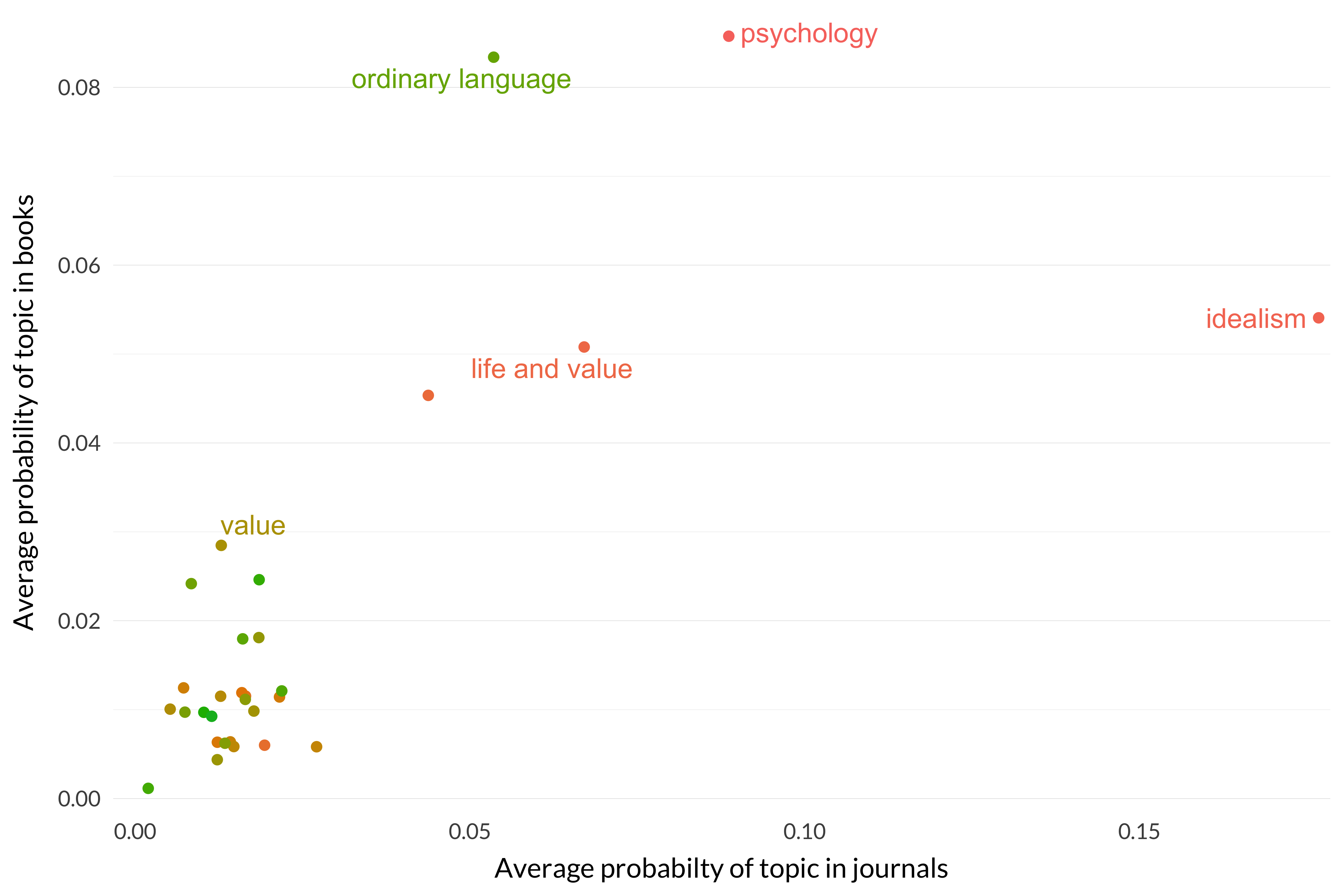
Figure 9.1: Average probability for the first thirty topics in journals and books.
The books I’ve chosen are more like ordinary language, and less like idealism, than the journals. And they have a little more ethics in them. We get a similar story if we look at the maximum values instead of the average values.
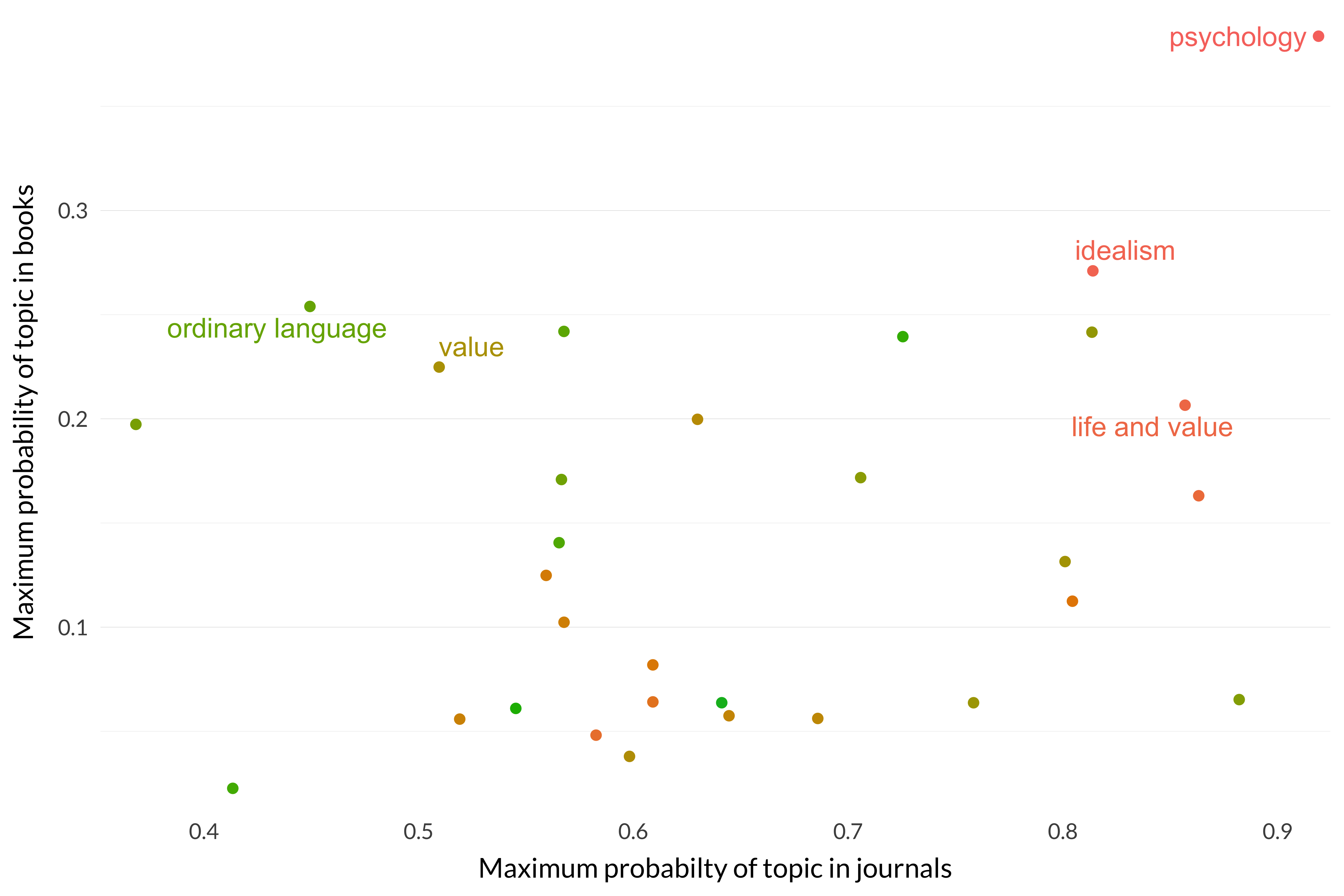
Figure 9.2: Maximum probability for the first thirty topics in journals and books.
There are a lot more journal articles, and some of them are very short, so the maximum probabilities go much higher for the journals than the chapters. But otherwise there isn’t much of a pattern here. Let’s move on to the middle thirty topics.
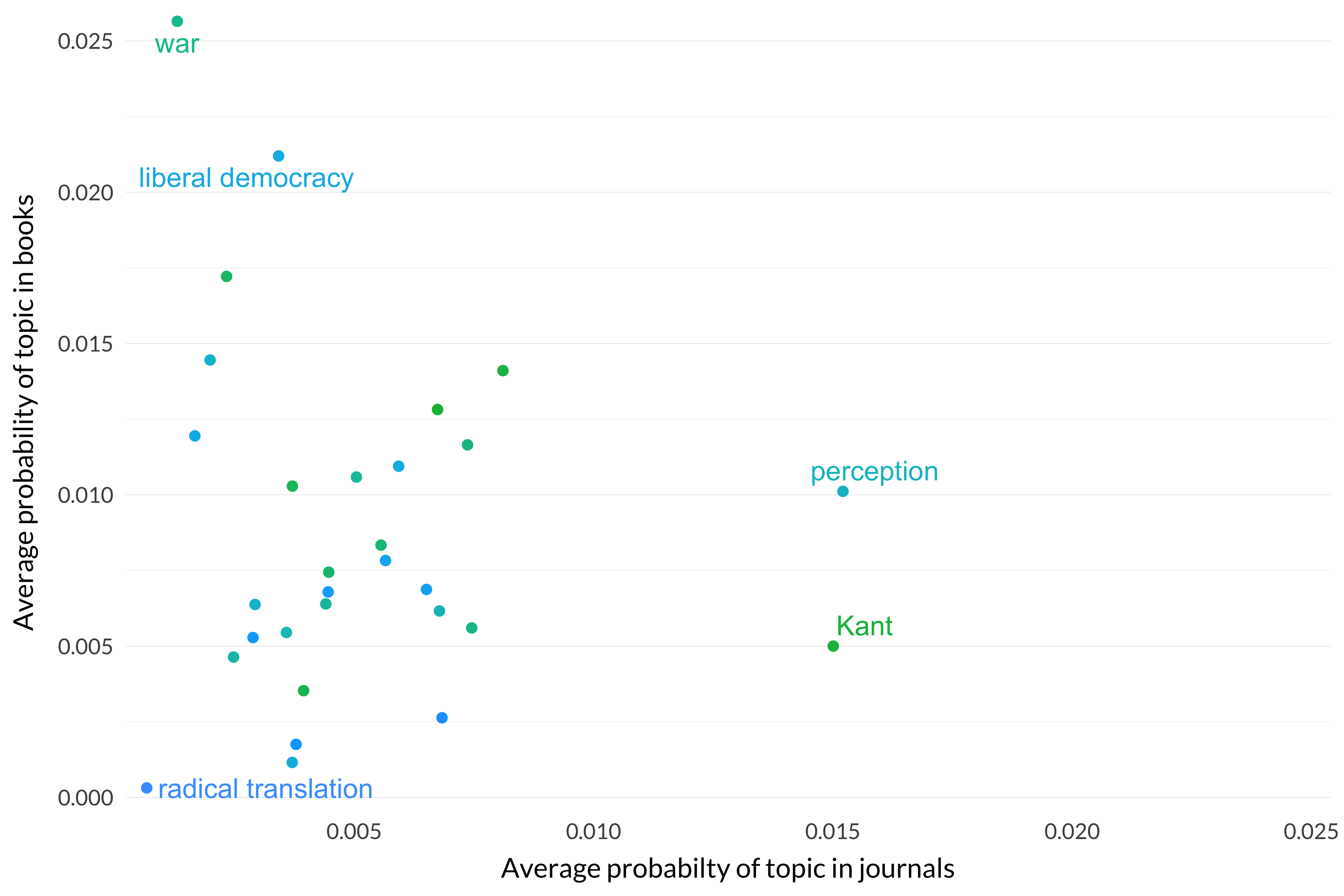
Figure 9.3: Average probability for the second thirty topics in journals and books.
This perhaps tells us more about the books I chose than the difference between philosophy in books and philosophy in journals. I’m sure there was discussion of Kant and perception in books at the time; just not so much in these eight books. Maybe war and liberal democracy are under-represented in the journals relative to their importance to philosophy at the time; I would need more information. No one is talking about radical translation before 1925. The same patterns hold, more or less, if we look at maximum values.
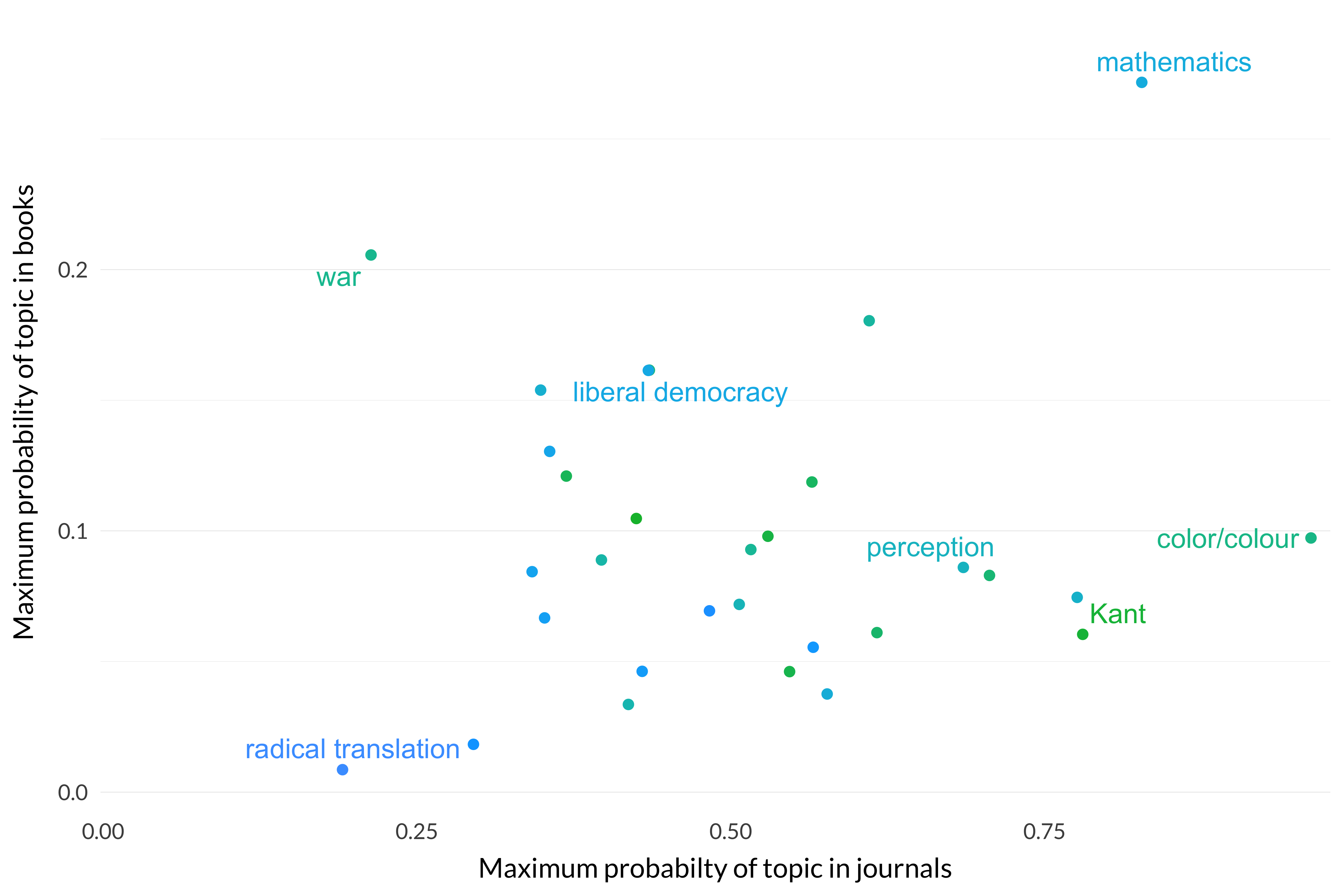
Figure 9.4: Maximum probability for the second thirty topics in journals and books.
The maximum probabilities are, as always, higher for the journals than for the book chapters. And there are some articles that are really about color, or about philosophy of mathematics. There is, as I’ve already mentioned, one book chapter that’s also about philosophy of mathematics. Onto the last thirty.
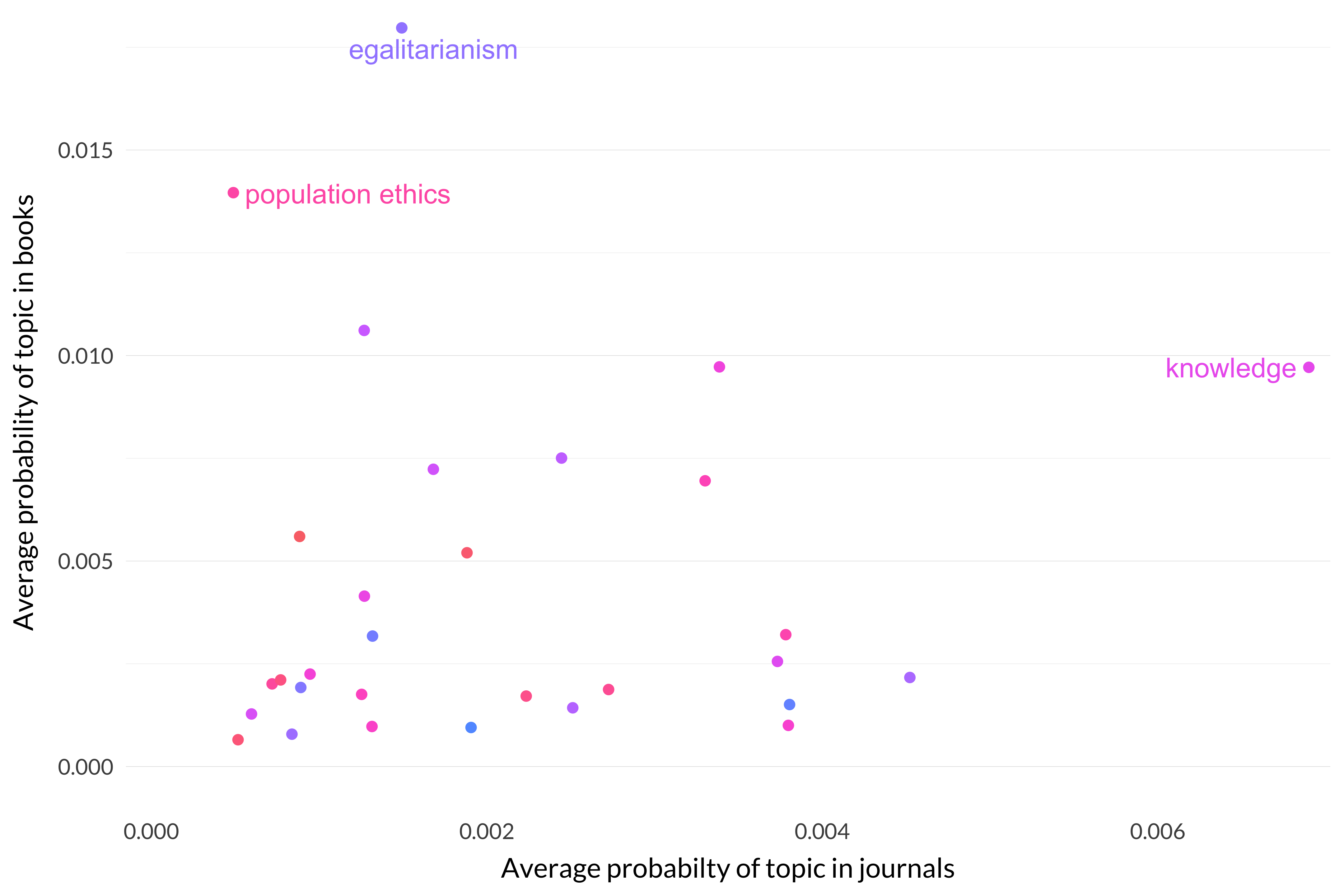
Figure 9.5: Average probability for the last thirty topics in journals and books.
Note that the scales here are very different. The numbers are all low, but they are much lower for the journals than the books. So even though knowledge is way over to the right of the graph, the numbers for it are actually bigger in the books than the journals. And it’s a little bigger in the journals than I had quite realised; there are no articles primarily in epistemology, but it isn’t at zero like some other topics. Let’s end this section with looking at the maximum probabilities in each topic.
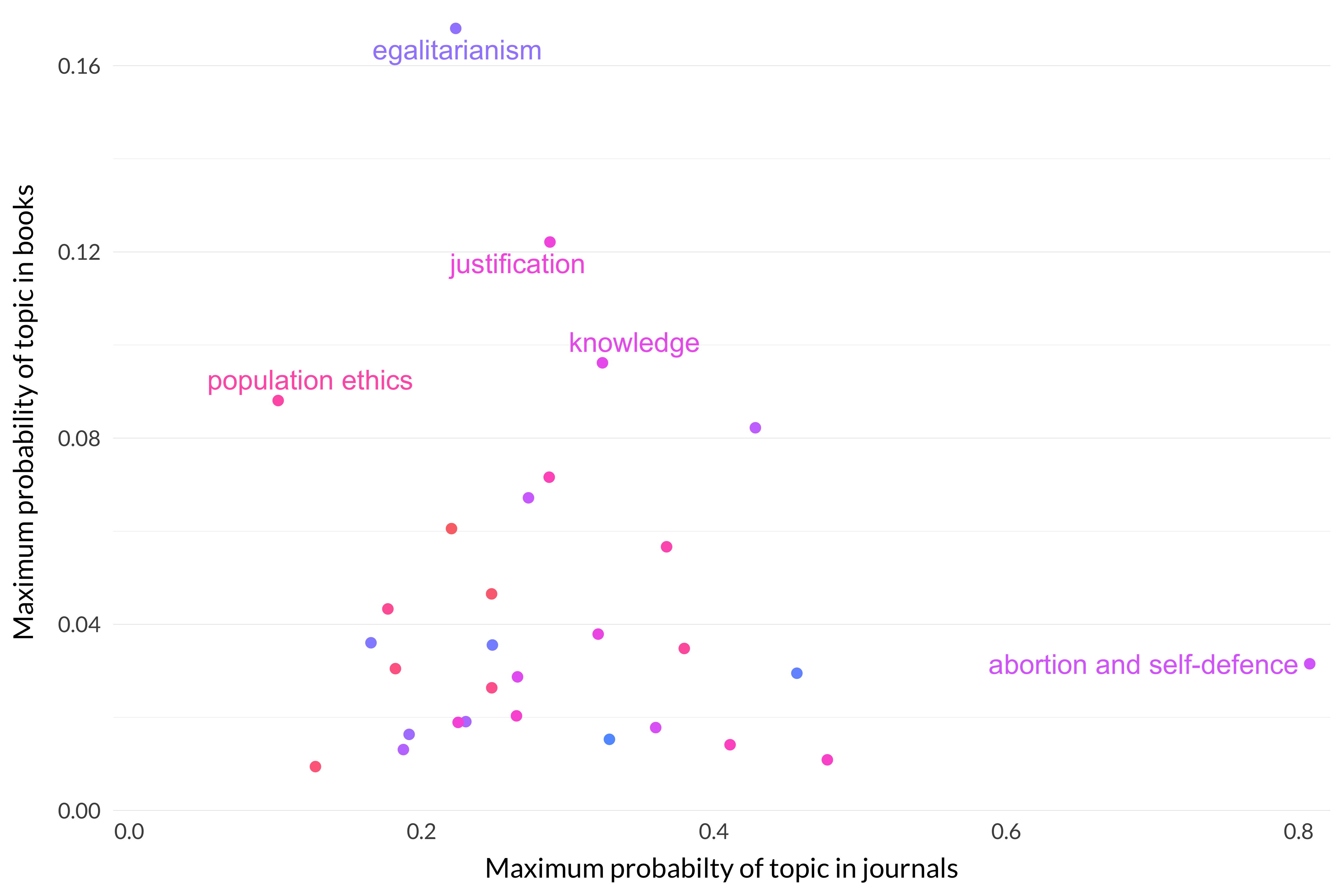
Figure 9.6: Maximum probability for the last thirty topics in journals and books.
For all thirty of these, the highest probability in the journals is higher than the highest probability in any book chapter. I was wondering whether the epistemology chapters would be the counterexamples to this claim, but they didn’t come that close. Where we did get close to a counterexample was that Sidgwick almost sounds more like a modern Parfitian than any journal author. But not quite—when there are three thousand journal articles, there will usually be one counterexample to any generalisation in there somewhere.
Is this a philosophy book? Well, I think it’s an important work of applied political philosophy.↩︎
Small note on methodology. When I talk about the average topic probability for the books, this is something that gets calculated in two steps. First, I calculate the average for each book, across its chapters. Then I average the books. I’m doing this rather than averaging the chapters because that approach would mean that the books with more chapters would swamp the books with fewer.↩︎